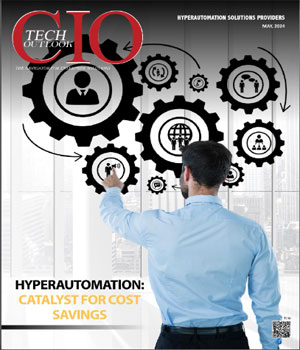
CIOTechOutlook >> Magazine >> January - 2016 issue
DCIM – rescue to key challenges in data center management
By
 Headquartered in Somerset, NJ, with Indian head office in Gurgaon, Raritan International is a provider of Data Centre Power Monitoring and Management solutions, DCIM software, and KVM-over-IP for data centres.
Headquartered in Somerset, NJ, with Indian head office in Gurgaon, Raritan International is a provider of Data Centre Power Monitoring and Management solutions, DCIM software, and KVM-over-IP for data centres.The worldwide trend for consolidation and construction of huge data centers has been basically driven by economy-of-scale benefits. This trend has been accelerated and facilitated by technological advances such as Web-based applications, system virtualization, more powerful servers delivered in a smaller footprint and an overabundance of low-cost bandwidth. The need of the hour is to have better tools and processes to effectively manage the enormous inventory of physical assets and the complexity of the modern data center infrastructure. Experience shows that once a data center approaches 50-75 racks, management via spreadsheets and Visio becomes unwieldy and ineffective.
Data center management is becoming more crucial and traditional tools and methods just don’t allow you to keep up with current job complexity and demands. In order to manage deepening costs, complex deployments, and ensure reliability and uptime, data center managers need access to information that isn’t always readily available.
Listed below are the top five challenges data center managers face and DataCenter Infrastructure Management (DCIM) solutions that can address those challenges.
Challenge 1: Maintaining Availability and Uptime
If you’re using spreadsheets or home-grown tools to manage your server information, you probably already know that the information stored can be outdated, inaccurate, or incomplete. This can prove challenging when unplanned downtime requires troubleshooting, or while attempting to map the power chain.
A DCIM solution provides a single repository to house your asset information. It enables consistent and accurate record keeping, and provides instantaneous visual and textual information to reduce the time it takes to locate assets and dependencies, thereby reducing troubleshooting time.
Challenge 2: Improving Utilization of Capacity (Power, Cooling, Space)
Often data center managers are not able to determine if their facilities are truly running at peak capacity. Perhaps, in a dynamic data center, it is almost impossible to understand how much space, power, and cooling you have; predict when will you run out, which server is the best for a new service, and just how much power is needed to ensure uptime and availability.
A DCIM tool, which is used to quickly model and allocate space and also manage power and network connectivity, is key to managing utilised resources and discover hidden capacity if any.
Challenge 3: Reporting Reduced Operating Expenses
It is not enough to implement solutions that reduce operational expenses; you also have to prove it. According to Uptime institute, “Enterprise data center managers will need to be able to collect cost and performance data, and articulate their value to the business in order to compete with third party offerings.”
A DCIM solution with dashboard and reporting tools instantly aggregates data across several dimensions allowing data center managers to quickly show stakeholders that the data center is moving towards full operational efficiency.
Challenge 4: Managing Energy Usage & Costs
Most data centers by design, consume vast amounts of energy in an incongruously wasteful manner. Online companies typically run their facilities at maximum capacity around the clock and as a result of which data centers can waste upto90 percent or more of the electricity they pull off the grid. A significant amount of money can be saved with reduction in energy usage while changing the perception that data centers are ‘energy hogs’. In fact, accurate measurement of energy is essential.
A DCIM solution helps data center managers monitor energy consumption, schedule off servers during off hours, and identify candidates for consolidation. Environmental sensors can collect information for safely raising temperature set points.
Challenge 5: Improving Staff Productivity
Non-automated or manual systems require facilities and IT staff to spend an extraordinary amount of time logging activities into spreadsheets. This reduces time that can be spent making strategic decisions for the data center and improving service offerings.
DCIM solutions automate manual processes like workflow approvals and the assignment of technicians to make additions, shifts, and other changes. This also assists with provisioning and auditing, while achieving operational savings.
DCIM at work for a better tomorrow
CXO Insights
Closing the Cybersecurity Skills Gap - Calling...
By Michelle Johnson Cobb Vice President, Worldwide Marketing for Skybox Security
SAP Usability and Adoption Issues and Answers
By Srinivasa Devarkonda, Group Director-SAP & Business Consulting, AmeriGas
Increasing Relevance in the Digital Age





